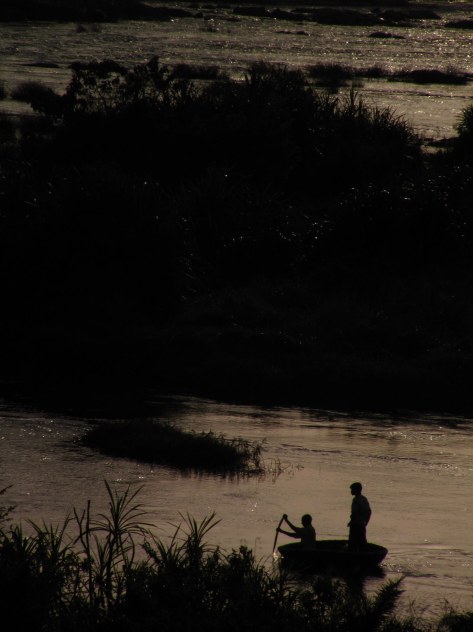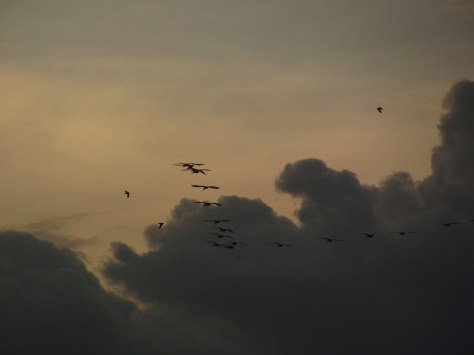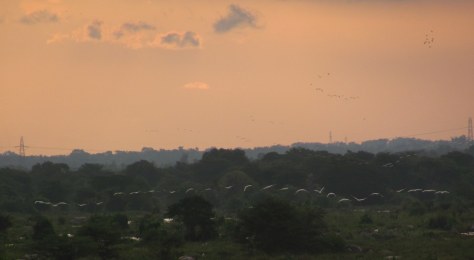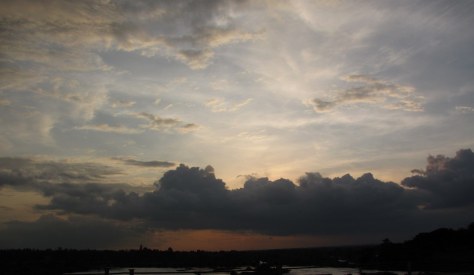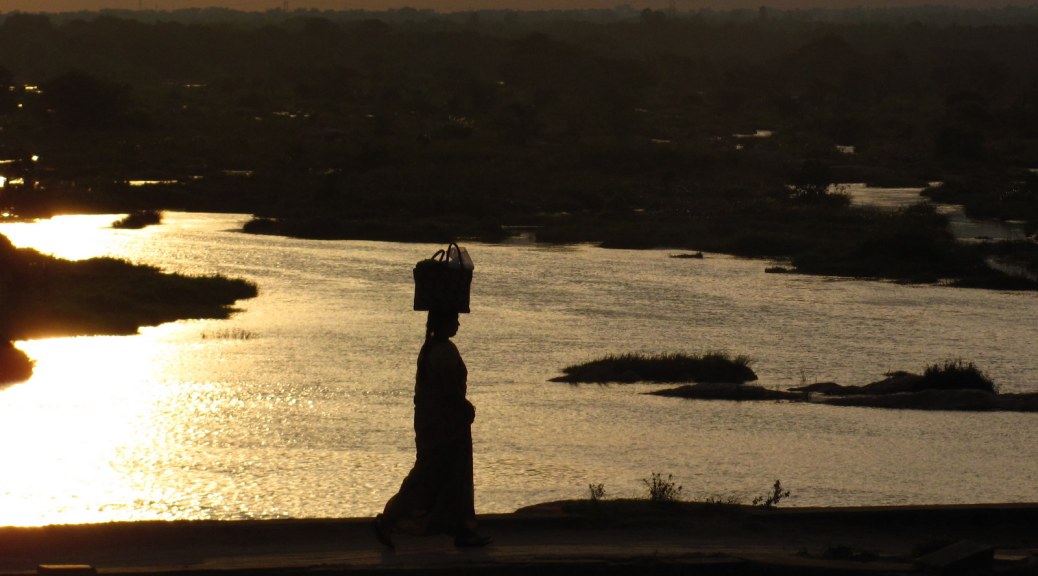All energy we use is sunshine. Apart from nuclear, that is. Oil, Gas, Wind, Hydro, Coal, all these are direct or indirect products of the 1300 W/sq mt that we get from the sun. Since energy in some form or the other is crucial for life, boredom and joblessness encouraged an analysis of the flow of energy in a rural system.
The study of any kind of matter/energy cycle usually requires three concepts: stock, flow and flux. Stock is a reservoir of material/energy. Flow is matter/energy in motion, and is interconvertible with a stock, a lake and a feeder stream for example. Flux is matter/energy in motion that cannot be converted to a stock, like insolation or wind.
Most of the easily available sources of energy are fluxes, which can be tapped as the move past us for our use. For example, birds use the rising thermals to facilitate flying (An interesting thing is that only birds which have very small chances of eating daily use the thermals most efficiently, like eagles and kites. Herbivores have far more rapid wing-beating, since they are always close to the ground and food is abundant). Similarly, we use windmills, grow crops for the same reason.
The most common energy source in a rural system is biomass (including animals). Remember, energy is not only what we use to switch on our bulbs, but also what we eat in the form of rice/wheat etc., Biomass in various forms like trees and their products, animal meat, oil derivatives from plants, dung and foodgrains. Since plants also tap fluxes of energy from the sun and water, this implies that most rural activity happens by harvesting energy. Unlike other organisms which use most of their energy in the search of more energy, most energy needs of humans are for modifying ecosystems. We build houses and spend energy keeping it habitable. In rural systems, most energy is spent on agriculture. Crop ecosystems are highly unstable and need continuous inputs of energy in the form of human intervention to keep them stable. Leave a standing crop unattended for enough time and it gets decimated by ‘weeds’ and ‘pests’. Weeds and pests are names given to organisms which are usually adapted better to survive a competition with food crops for scarce nutrients and water in a given ecosystem. Thus, it is hardly any surprise that rural life and culture revolves around agriculture (especially harvests, which are the fruit of intensive energy inputs).
Another noticeable feature of rural energetics is the lack of any significant stocks of energy. Most people will keep just enough food grains to feed their families and sell the surplus, if any. Dead biomass is understandably difficult to store, and few landlords have large amounts of animals. Most rural energy needs are met, even today by the very primitive method of harvesting fluxes available everywhere. The few stocks of energy which are used, like firewood have very less energy content and are therefore extremely inefficient methods of storing energy. This lack of significant stocks of energy to exploit leads to a typically low energy lifestyle : The plough, the hand chisel, the bullock cart, lack of 100 storey buildings, low population densities, durable household articles which are used for generations, all are signs of cultures which understand their energy scarcity and dare not waste too much energy for frivolous purposes. Since grains and grass are the most significant and accessible stocks available, most things are done by human or animal power.
Coming to the flows of energy, flows can occur only between points of different potential, everyone knows that much from high school physics or using common sense. Water can only flow if there is a gradient, food will cook only if the fire is hotter than what is in the vessel. For energy flows, potential is usually measured indirectly by temperature. The hotter a substance is, the more energy it is said to contain. Since like we mentioned previously, stocks of energy are very small in rural systems, thus most energy flows happen between very small temperature differentials, mostly around room temperature. If one thinks about it, this is the way Nature operates. One can hardly find natural processes which happen across large temperature differentials.
The implications of such an energy profile is the following: Since the energy fluxes being tapped are inherently unpredictable and outside our control, nothing can happen in a rural system which depends on reliable sources of energy. Therefore, understanding the periodic nature of these fluxes and aligning human activity around them is an important facet of life. This being the case, any changes in this periodicity hits rural areas badly. The recent rains in India are an example of what can happen. Like we all know, climate change is going to affect food production. Rural industries which depend upon raw materials harvested from seasonal forest produce are also under risk if global energy and biogeochemical cycles get altered significantly. Therefore, rural systems should have a greater interest in maintaining Nature and her status quo than the urban sprawl. Understanding that overdependence on such energy flows is dangerous, those in the village that can afford it, build up stocks of energy. However, most cannot afford such stockpiling, and are therefore going to be the most affected in this era of climate change.
Knowing these facts, it is easy to imagine how an urban energetics would be like: the exact opposite of whatever has been said. What this implies and what lessons are to be learnt, later.
PS: I have not taken electricity into account, which is an extremely concentrated, non-thermal energy source. One can say that this analysis is somewhat relevant for a traditional rural society. Effects of electricity in the following post.






